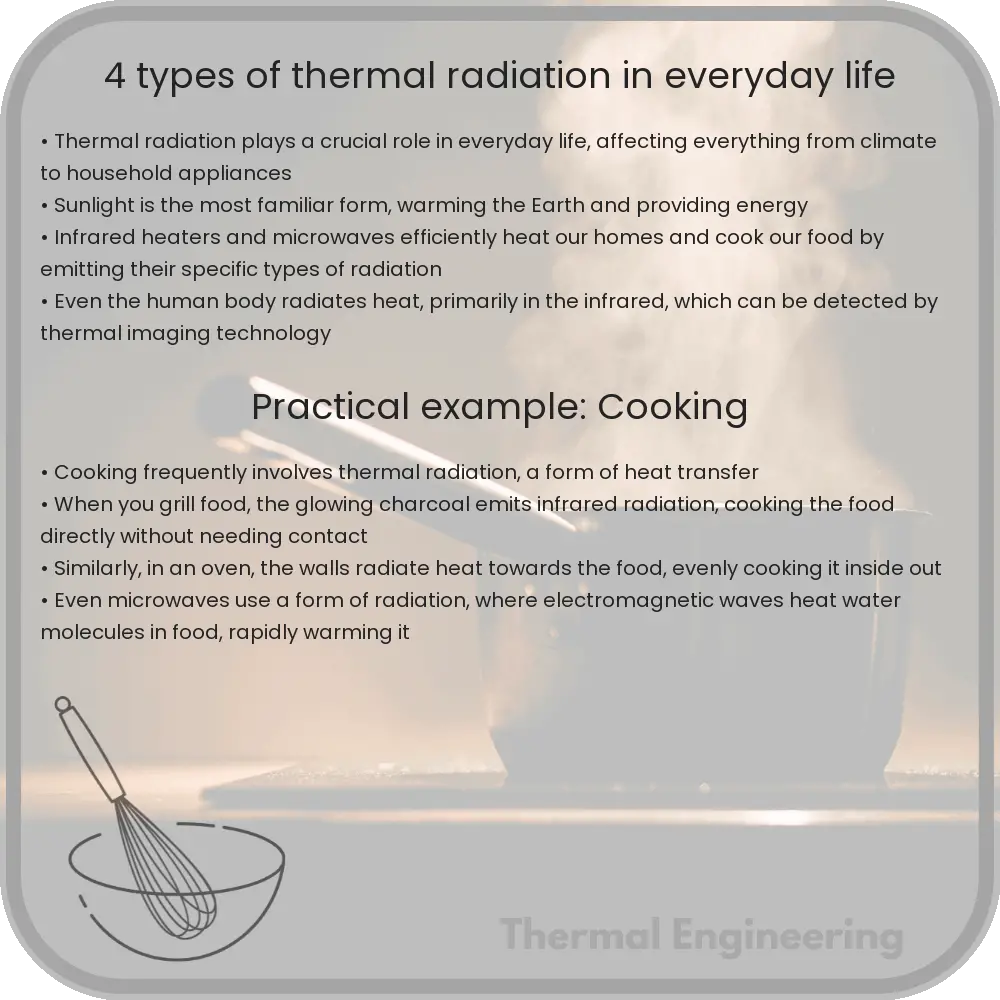Learn about thermal radiation, a key form of electromagnetic radiation, its everyday implications and applications in fields like solar energy, heating systems, and more.

Introduction to Thermal Radiation
Thermal radiation, often simply referred to as heat radiation, is a form of electromagnetic radiation that all objects emit based on their temperatures. Unlike conduction and convection, thermal radiation does not require any medium to transfer energy. It plays a crucial role in various everyday phenomena and engineering applications. Here, we explore four common types of thermal radiation that play a significant role in our daily lives.
1. Solar Radiation
Solar radiation is perhaps the most well-known form of thermal radiation interacting with the Earth. It originates from the sun and travels through space to reach our planet. This radiation is responsible for providing the light and heat necessary for life to thrive on Earth. It’s composed of a range of electromagnetic wavelengths, including infrared (IR), visible light, and ultraviolet (UV) rays. The absorption, reflection, and dispersion of these rays have critical implications for climate and weather patterns, as well as for various forms of solar energy technologies.
2. Radiant Heating Systems
Radiant heating systems are a practical application of thermal radiation in residential and commercial buildings. Unlike traditional heating systems that heat air (convection), radiant systems emit infrared radiation which directly heats objects and people in the room. Common forms of radiant heating include underfloor heating systems and infrared heaters. These systems are appreciated for their efficiency and the even, comfortable warmth they provide without stirring up allergens and dust.
3. Thermal Imaging
Thermal imaging cameras are devices that detect and translate thermal energy (infrared radiation) emitted by objects into visible light to analyze a particular scene or environment. These cameras are invaluable in several fields, from security and surveillance to diagnostic procedures in healthcare. They allow for the visualization of heat differences even in complete darkness, making them essential in firefighting, building inspections, and wildlife research.
4. Heat Emission from Appliances
Everyday appliances like refrigerators, ovens, and computers emit heat as they operate. This heat is a form of thermal radiation and results from energy being converted from one form to another, typically from electrical energy into thermal energy. This type of radiation is subtly present in our daily environment, influencing the ambient temperature within our living spaces and potentially impacting the effectiveness and efficiency of these devices.
Conclusion
Understanding the various types of thermal radiation can help us better appreciate how heat interacts with our environment and how it affects both natural processes and human-designed systems. From the warmth of the sun to the heat emitted by a computer, thermal radiation is a fundamental aspect of our daily experiences and the technologies we rely on.